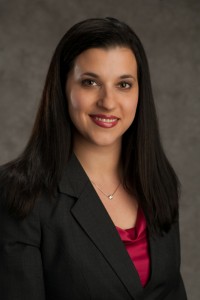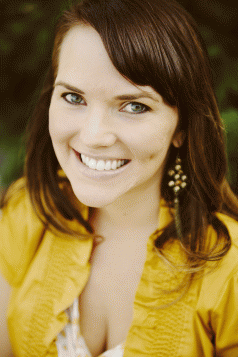I have been really interested in eye health since having to take Cody to the eye doctor. They thought he might have astigmatism, which thankfully was not the case. Just a week after taking him to the doc, I was approached about a guest post pertaining to AMD and I HAD to have it on the blog! Our eyes are SUPER important and we tend to put ourselves aside when we have kids. AMD is something that affects people over 40 and it is very serious! Please read this post and share with everyone you know. We have to take care of ourselves and that includes our eye sight!!!
“According to the National Eye Institute, Americans have consistently identified the fear of vision loss as second only to the fear of cancer in public opinion polls that have been conducted over the past 40 years. However, between taking care of our kids, working and all of the other things that life throws at us, it can be a challenge to remember to think about eye health. Unless you realize that you need to update a prescription (and sometimes even that has to be extremely noticeable to get you into the office), most of us busy moms may not give our eyes a second thought. But neglecting your eyes now could impact your ability to see in the future.
Our eyes contain the hardest working muscles in the body, which are moving the eyes at a nearly nonstop pace during the day (sounds like us moms in general). But right around the age of 40, these muscles start to weaken a bit. Just like the rest of your body, things just aren’t as easy as they were when you were 20. Unfortunately, this doesn’t always just mean that it’s time to get some reading glasses. The risk for more serious eye problems also increases as you age. Around this same time, you start facing a real risk of age-related macular degeneration, or AMD. Having to wear glasses is one thing, but losing your vision completely is a major concern.
What is AMD?
AMD is a condition that degrades your central vision, meaning that you can only see through your peripheral vision. It’s the leading cause of blindness in adults, affecting almost 2 million people over the age of 40.
There are two types of AMD: wet and dry. Dry AMD, the most common type, is a gradual and progressive buildup of tiny deposits behind the macula in your eye. Over time, these deposits start to break down the macula, which is the most critical part of our retina that is responsible for our detailed central vision. Eventually, this is what can lead to blindness, leaving people with only non-specific peripheral vision. Wet AMD, on the other hand, is where blood vessels crowd the macula—somewhere that they aren’t supposed to be. Wet AMD accounts for only 10 percent of cases but is much more aggressive than Dry AMD, leading to central vision loss and blindness much faster.
Risk factors for AMD include:
• Smoking (This is one of the worst things you can do for your eyes, as smoking attacks the delicate blood vessels that keep the macula healthy.)
• Being over 40 years old
• Family history of AMD
• Being Caucasian
• Not wearing sunglasses
• Not getting eye exams
• Poor diet
• Being overweight
Symptoms and prevention of AMD:
Unfortunately, most people don’t know that they have AMD until the damage has occurred. Unlike other health issues, you can’t “feel” the symptoms; you just progressively start losing your sight. In fact, many people don’t even notice the changes at first, because it tends to be gradual. While the bad news is that this damage cannot be repaired once it has started, the good news is that by protecting your eyes with sunglasses, you can significantly reduce your risk. It is important to remember that damage from UV exposure can occur at any age, so remember to protect your little ones’ eyes with sunglasses just like you protect their skin with sunscreen. You can also increase the opportunity for early detection and treatment by getting annual eye exams since eye doctors can usually help prevent or slow the progression of the disease.
One of the easiest ways to test yourself for AMD in between eye exams is to look at an Amsler grid. If you notice any blurry or wavy lines, you should call your eye doctor immediately for an appointment. Click here for an Amsler grid that you can print out and hang on the fridge at home.
Studies have shown that another great way to help prevent AMD is to eat well and exercise regularly. Certain nutrients in foods like spinach, fish, fruits and nuts are all beneficial to help increase macular pigment. Zeaxanthin and lutein supplements may even be recommended by your eye doctor if you’re concerned that your diet isn’t as balanced as it should be. So if your kids (or you) need another reason to eat veggies and get outside to play, just remember that it’s what the doctor ordered!”
About Dr. Lewis:
Jenna Lewis, OD, is a VSP Vision Care optometrist at Thomas Eyecare inBeachwood, Ohio. She focuses on lifetime whole eye health, preventative care and the treatment of chronic eye conditions. She also has a special interest in special treatments to help reduce myopia progression in children, such as orthokeratology. Dr. Lewis received her O.D. from the Illinois College Of Optometry and a B.S. from John Carroll University. Dr. Lewis and her husband have a two-year-old son, Holden, with a second child due in June.







{ 5 comments… read them below or add one }
Very well written! Eyes are very important and hence they demand attention and care, which we hardly remember to provide. Frequent visits to an optometrist is very important in this context.
i tell my patients that all the time. you eyes are like any other part of your body, and they need regular attention and care
Interesting way of thinking. I have the same.
Protecting your eyes starts with the food on your plate. Nutrients such as omega-3 fatty acids, lutein, zinc, and vitamins C and E might help ward off age-related vision problems such as macular degeneration and cataracts.
Great info!Motherhood Support <a href="http://www.motherhoodsupport.comwww.motherhoodsupport.com<br />FacebookTwitter You TubeInstagramPinterest